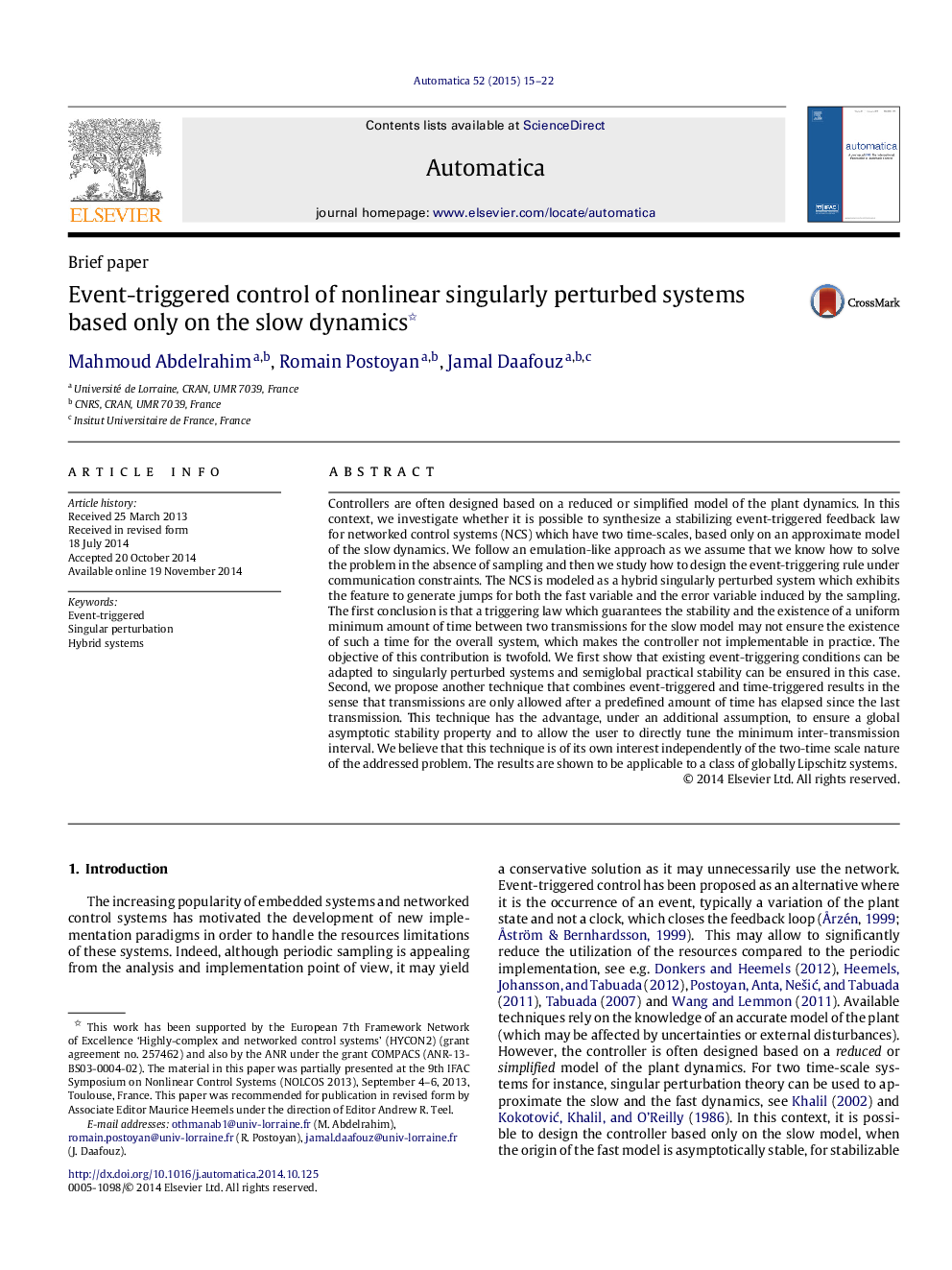| کد مقاله | کد نشریه | سال انتشار | مقاله انگلیسی | نسخه تمام متن |
|---|---|---|---|---|
| 695766 | 1460663 | 2015 | 8 صفحه PDF | دانلود رایگان |
Controllers are often designed based on a reduced or simplified model of the plant dynamics. In this context, we investigate whether it is possible to synthesize a stabilizing event-triggered feedback law for networked control systems (NCS) which have two time-scales, based only on an approximate model of the slow dynamics. We follow an emulation-like approach as we assume that we know how to solve the problem in the absence of sampling and then we study how to design the event-triggering rule under communication constraints. The NCS is modeled as a hybrid singularly perturbed system which exhibits the feature to generate jumps for both the fast variable and the error variable induced by the sampling. The first conclusion is that a triggering law which guarantees the stability and the existence of a uniform minimum amount of time between two transmissions for the slow model may not ensure the existence of such a time for the overall system, which makes the controller not implementable in practice. The objective of this contribution is twofold. We first show that existing event-triggering conditions can be adapted to singularly perturbed systems and semiglobal practical stability can be ensured in this case. Second, we propose another technique that combines event-triggered and time-triggered results in the sense that transmissions are only allowed after a predefined amount of time has elapsed since the last transmission. This technique has the advantage, under an additional assumption, to ensure a global asymptotic stability property and to allow the user to directly tune the minimum inter-transmission interval. We believe that this technique is of its own interest independently of the two-time scale nature of the addressed problem. The results are shown to be applicable to a class of globally Lipschitz systems.
Journal: Automatica - Volume 52, February 2015, Pages 15–22
